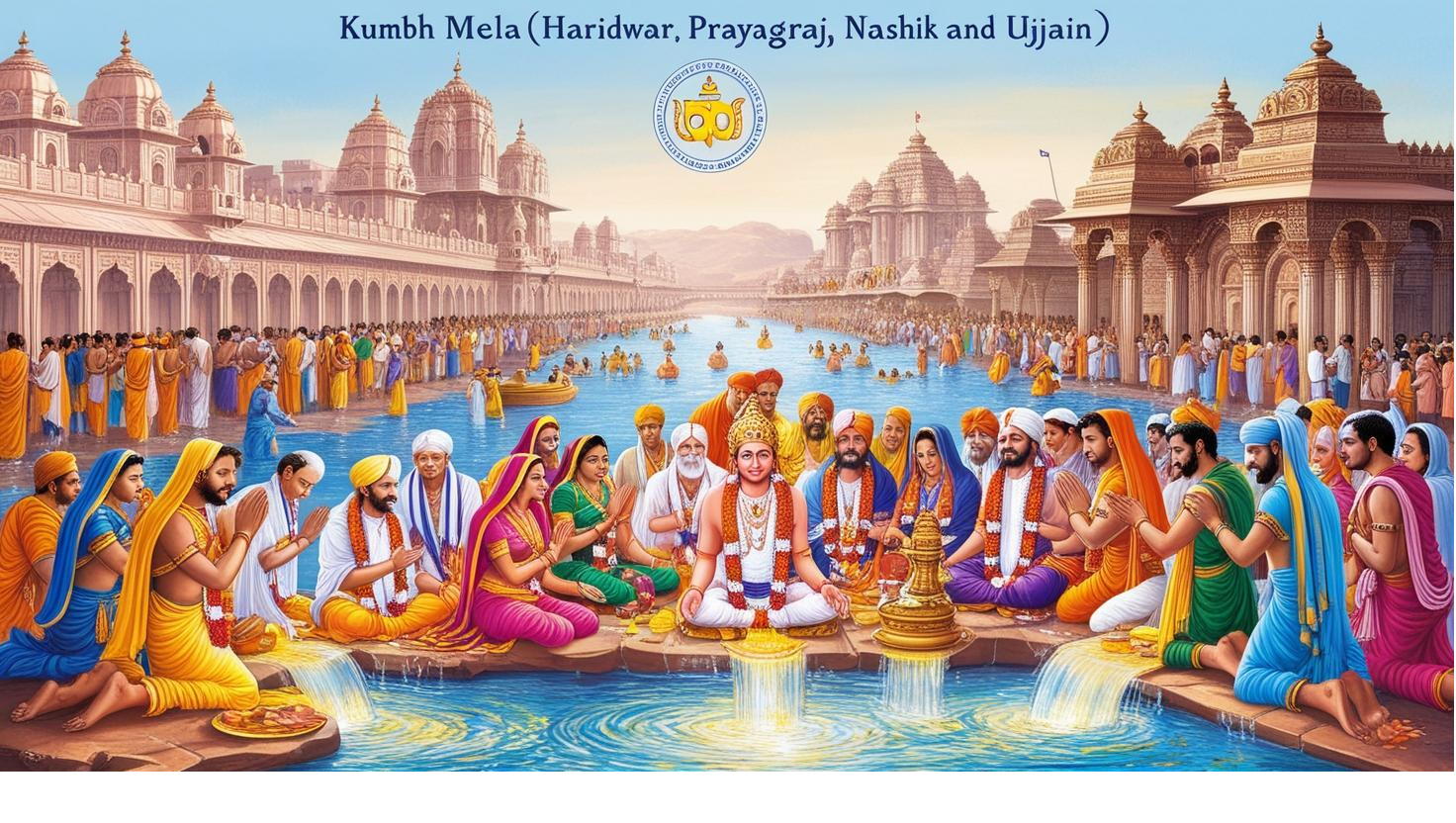ज्ञान का दिव्य अमृत
किसी समय की बात है, भारत के शांतिपूर्ण भूमि पर देवता और राक्षसों के बीच युद्ध हो रहा था। इस युद्ध के दौरान अमृत का एक कलश प्रकट हुआ, जो अमरता का अमृत था। देवता और राक्षस इस अमृत को पाने के लिए कड़ी लड़ाई करते हैं, और युद्ध के दौरान अमृत के कुछ बूंदें चार पवित्र स्थानों पर गिर जाती हैं—हरिद्वार, इलाहाबाद (प्रयागराज), नाशिक और उज्जैन। इन स्थानों को वह स्थान माना जाता है जहाँ कुम्भ मेला आयोजित किया जाता है।
कहानी के अनुसार, कुम्भ मेला सिर्फ पवित्र नदियों में स्नान करने का पर्व नहीं है, बल्कि यह ज्ञान और शांति के अमृत में स्नान करने का समय है। पानी में देवी-देवताओं का आशीर्वाद होता है, जो आत्मा को शुद्ध और ताजगी प्रदान करता है। कुम्भ मेला के दौरान लोग अपने जीवन की शुद्धि के लिए एकत्र होते हैं, और प्रेम, एकता और सम्मान का आदान-प्रदान करते हैं।
सीख: कुम्भ मेला हमें यह सिखाता है कि ज्ञान और kindness को बांटना महत्वपूर्ण है, ठीक वैसे ही जैसे अमृत को देवता और राक्षसों के बीच साझा किया गया था।
The Divine Nectar of Knowledge
Once upon a time, in the peaceful land of India, the gods and demons were at war. During their battle, a pot containing the nectar of immortality, called "Amrit," appeared. The gods and demons fought fiercely to claim the nectar, and during the battle, some drops of Amrit fell on four sacred places on Earth—Haridwar, Allahabad (Prayagraj), Nashik, and Ujjain. These places became known as the spots where the Kumbh Mela is held.
The story goes that the Kumbh Mela is not just a festival for bathing in the holy rivers, but also a time to "bathe" in the nectar of wisdom and peace. The water is believed to hold the divine blessings of the gods, which purify and refresh the soul. People from all walks of life gather during the Kumbh Mela to take a dip in the sacred rivers, connecting with the divine and learning the importance of unity, respect, and love for all.
Moral: The Kumbh Mela teaches us to share wisdom and kindness, just like the nectar of immortality that was shared among the gods and demons.

